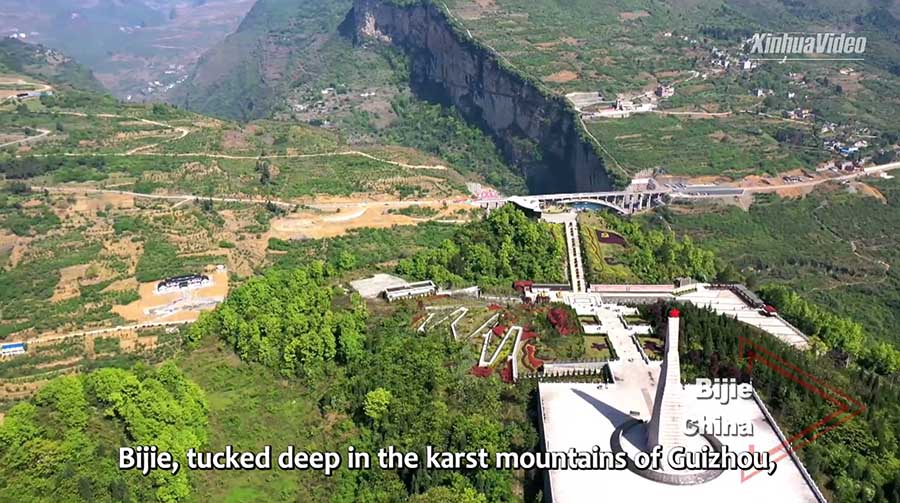

BIJIE, Dec. 6 (Xinhua) -- Bijie, tucked deep in the karst mountains of Guizhou, used to be one of China's most impoverished cities.
It was once known for its exceedingly barren land.
After decades of strenuous efforts, the city has managed to rise above the poverty line.
Bijie's success story has been noted by Chinese President Xi Jinping, who calls it "a model of China's poverty alleviation drive."
Haique Village sits among the karst landform in Bijie. The village once suffered from severe soil erosion, with a forest coverage rate of less than five percent.
In the 1980s, all 168 households here lived in poverty. Residents faced acute shortages of food and clothing. The annual per capita net income was only 33 yuan, or around 5 U.S. dollars.
Things began to change in 1988, when Bijie was approved by the State Council, China's cabinet, as a trial zone for poverty alleviation.
Backed by the central government and other state organs, Haique Village pressed forward with planting trees.
After three years of hard work, pine trees took root in more than 800 hectares of land. The once barren mountains turned into a luscious green.
"Previously, as we tried to cultivate the land, the land would turn even more arid, and villagers would become even poorer. But now as the water and soil are both getting better, our grain production has increased several times. Some villagers are growing apple trees, some have set up edible mushroom greenhouses, and some are running livestock farms. So our villagers are earning much more money. In 2016, the entire village rose above the poverty line," Wen Zhengyou, a village official told Xinhua.
In Chengmanyuan Village, the per capita net income for villagers over 30 years ago was less than 200 yuan (30 U.S. dollars) a year.
The village once struggled with severe deforestation and poverty, but now it has been turned into a major production base of citrus fruits.
"My family used to plant corn near the Chishui River. It wasn't easy to plough a new layer of soil. And after a heavy rain, more than 1/3 of the soil would be washed away. Sometimes we would have more than 50 days of drought in a year. The grain filling period didn't last long, so what we reaped after a year's farmwork could only feed us for six months," Zhao Lianquan, a villager, recalled.
In the 1990s, villagers shifted from planting corn to cultivating fruit trees, under the guidance of agricultural experts.
This not only helped preserve water and soil and protect the environment, but also brought significantly higher economic benefits.
"Now the village boasts of a fruit-bearing forest of more than 7,500 mu (500 hectares), which yields over 10 million kilograms of fruits each year. Anytime you visit our village, you'll be able to try some fresh fruits from the trees," said Zhang Anfu, a village official.
"We have turned confrontation with nature into a win-win result. The trial zone has been constantly blazing new trails of growth for poverty-stricken areas with regard to building a moderately prosperous society in all respects," the Deputy Director of the Bijie Poverty Relief Office Liu Jingdong told Xinhua.
On Nov. 23, Guizhou announced that its last nine poor counties had been removed from the "impoverished" list, including three in Bijie. This also indicates that China had removed all poor counties from the poverty list.
"General Secretary Xi Jinping shared the story of Bijie to inspire us to be more aware of the relationship between ecological, economic, and social development, and to encourage us to make unremitting efforts in comprehensively building a modern socialist country," said Hu Yuejun, an official from Guizhou Academy of Social Sciences.
